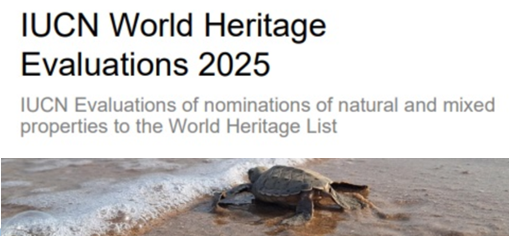PREVIOUS
IUCN World Heritage Outlook 2025
October 16 , 2025
17 hrs 0 min
7
0
- The 4th edition of the IUCN World Heritage Outlook was launched at the IUCN World Conservation Congress in Abu Dhabi.
- This report is a global assessment by the International Union for Conservation of Nature evaluating the conservation status of all natural and mixed UNESCO World Heritage Sites every 3 to 5 years.
- Over 80 % of natural heritage sites face direct climate risks such as coral bleaching, glacial melt, and wildfires.
- Approximately 10 % of global terrestrial carbon is stored in natural World Heritage Sites, supporting climate regulation.
- 15 sites were newly added to the "World Heritage in Danger" list, largely due to conflict, pollution, and ecosystem fragility.
- India has 7 natural and mixed World Heritage Sites, covering over 1.5 % of the global natural heritage area.
- The Sundarbans face mangrove decline due to rising salinity, cyclones, and sea-level rise, affecting biodiversity and protection services.
- The Western Ghats are under pressure from mining, construction, and land-use changes, threatening ecological balance.
- The Nanda Devi and the Great Himalayan National Park are experiencing glacial retreat and invasive species issues.

Leave a Reply
Your Comment is awaiting moderation.


